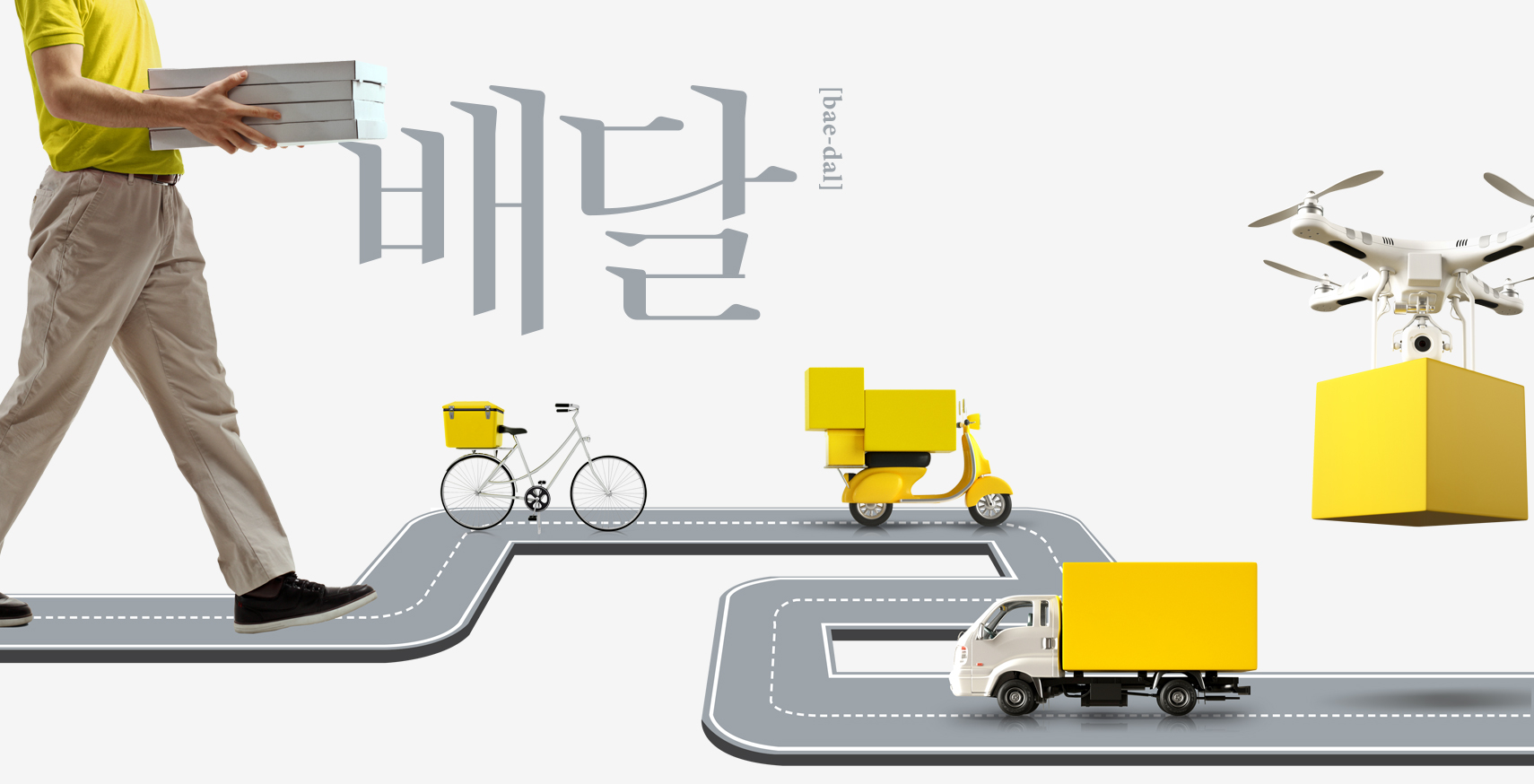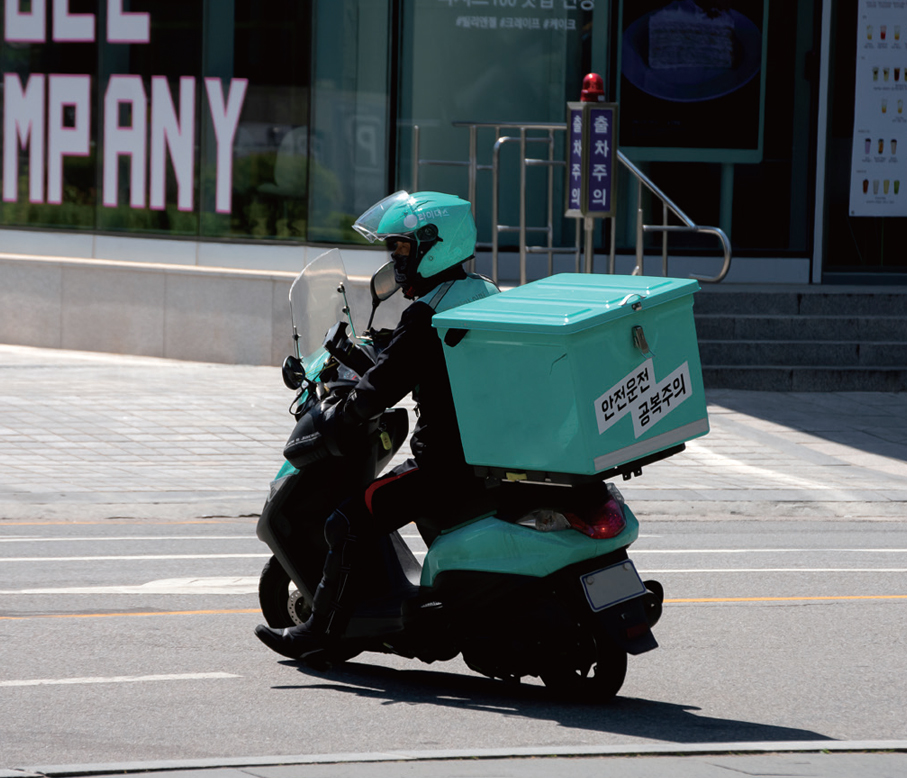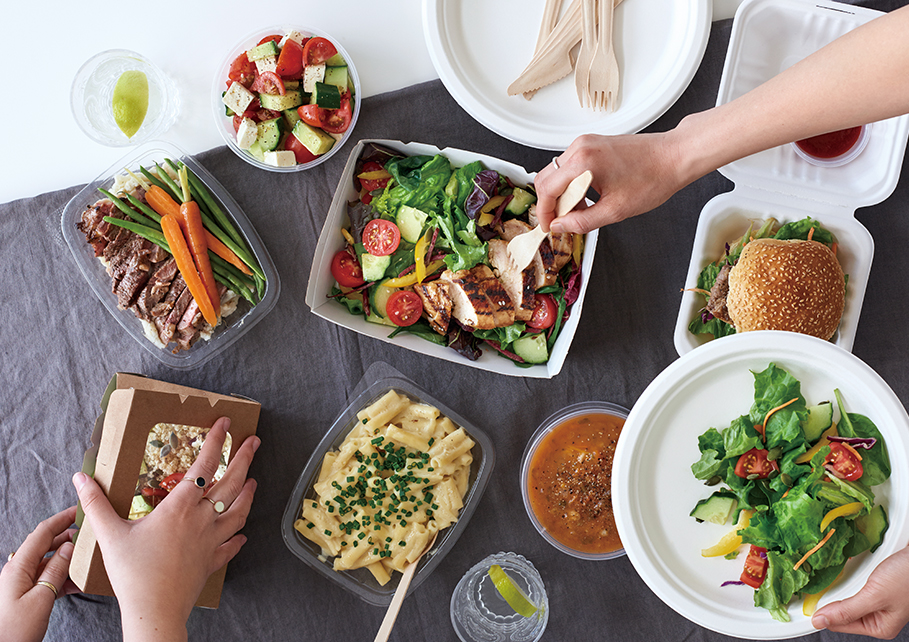August 2021

August 2021
When a recent survey carried out by a broadcaster asked non-Koreans to rank their favorite things about Korea, delivery culture ranked second in the top 10. Although delivery certainly is not unique to Korea, what is sure is that a unique culture has developed around the industry in this country. What are the reasons behind this culture’s breathtaking rise?
Written by
Choi Jeong-cheol,
Culture Columnist
Photo courtesy of
Yonhap News

In 1768, during the last year of the reign of King Yeongjo, a scholar named Hwang Yun-seok made a diary entry the day after he took the public service entry exam. He wrote that he and his friends had ordered a delivery of naengmyeon (a cold noodle dish) for lunch. Hwang’s diary proves that Koreans have been delivering food for over two and a half centuries.
In fact, the story goes back much further. The delivery of documents and correspondence has been common since antiquity. Military leaders often sent documents back and forth between central and provincial command posts using runners or soldiers mounted on horseback. Jeong Jung-bu, a key military ruler in the Goryeo Kingdom (918-1392), began his army career as a delivery soldier due to his outstanding running skills.
During the Joseon Kingdom (1392-1910), noble households used a special core of lightning-fast runners called bobal as an express delivery service for letters. The bobal service faded into obscurity only in 1885, when telegraph lines linking the capital Hanyang (today’s Seoul) with Incheon and Uiju were erected.
 Marketplaces were full of people delivering food to nearby shops.
Marketplaces were full of people delivering food to nearby shops.
 Merchants deliver Korean rice wine by bicycle.
Merchants deliver Korean rice wine by bicycle.
During the Japanese colonial period (1910-1945), a new industry emerged, this one specializing in delivering documents and goods. By 1939, the streets of Seoul were filled with delivery professionals called “messengers,” most working for a company named Yongdalsa.
These messengers followed a set of business rules. First, they exclusively used bicycles to provide expedited delivery. When customers contacted Yongdalsa, a messenger would be dispatched on a bicycle to pick up the item, and then would deliver the item to its destination, also by bicycle. This was certainly a direct precursor to modern motorcycle delivery.
Next, because they used bicycles, customers could use the service only to deliver letters or small packages. This helped standardize deliveries, ensuring that a package’s weight and volume stayed within the parameters of what could realistically be transported.
Thirdly, the service operated strictly within the four gates of downtown Seoul. This was because it took a lot of time to cover longer distances, and the company was determined to provide only express delivery, staying true to its principals of speed.
Finally, delivery-related mishaps were famously rare. Sometimes, riders were charged with carrying large bundles of cash. But these messengers were unfailingly honest and accurate. The customers who used the service were so confident in the messengers that they did not even check the items they received.
This messenger service was unique to Korea, and was based on a culture of mutual trust and a shared hunger for speed. Similar services did not exist in Japan at the time. As such, it’s indisputable that Koreans mastered this delivery system first. The messengers vanished upon the outbreak of World War II.
Digital technology helped delivery
services spread from busy cities
to the rest of the country.
 Korea’s delivery culture blossomed thanks to the development of ICT. © shutterstock
Korea’s delivery culture blossomed thanks to the development of ICT. © shutterstock
The delivery scene stalled in the middle of the 20th century in the wake of a series of upheavals, namely, liberation from colonial rule, the postwar division of the country into North and South Korea and the Korean War (1950-1953).
The industry resurfaced in the 1960s, however. Deliveries of newspapers and milk quickly became popular. And in city centers at lunchtime, the streets were abuzz with female restaurant staff carrying trays of food on their heads, ready to fill the stomachs of small business owners and office employees.
In the late 1980s and early 1990s, female caterers would visit offices in white-collar complexes just outside urban centers, selling home-made lunches in large cloth bags. This was a time when the entire nation was hard at work in a tireless effort to spark economic growth, even at the expense of sleep and proper meal times. As such, it was only natural that delivery services that not only brought meals to workplaces, but also collected the empty dishes, became increasingly popular.
In the 1990s, digital technology helped delivery services spread across the country. Ordering products via computer helped diversify the delivery industry’s range, scale and distribution systems, developing them to the point that freshly caught fish from coastal areas arrived in Seoul still wet from the sea.
The first motorcycle-powered express delivery services―colloquially called “quick service”―started to appear in Korea in 1993. These proved enormously popular as a way for commercial partners to exchange business-related documents or goods.
Along with technological advances, another factor that helped spark the growth of delivery culture was urbanization. As people flocked to cities, labor became concentrated in urban areas. This boosted the demand for delivery services, and ensured that there were many people willing to work in the delivery industry.
Korea’s delivery sector had all its ducks in a row, and exponential growth quickly followed.
 Motorcycles and motor scooters are among Korea’s most common means of delivery. © shutterstock
Motorcycles and motor scooters are among Korea’s most common means of delivery. © shutterstock
 Delivery services are booming during the COVID-19 pandemic. © shutterstock
Delivery services are booming during the COVID-19 pandemic. © shutterstock
Today, delivery in Korea is undergoing another renaissance. The number of delivery service users has skyrocketed as a result of the coronavirus pandemic. In response, many companies are aggressively expanding their business lines, and starting to make use of drones and robots.
However, this progress may come at the expense of some delivery workers’ jobs, just as the bobal delivery professionals were rendered obsolete by the advent of the telegram. Striking a harmonious coexistence between people and technology will help harness the wonders of cutting-edge IT in this ever-changing industry.